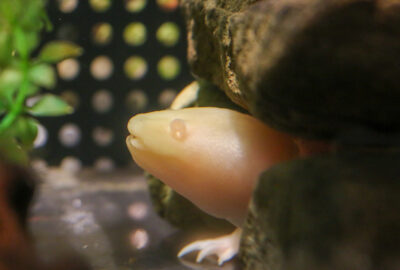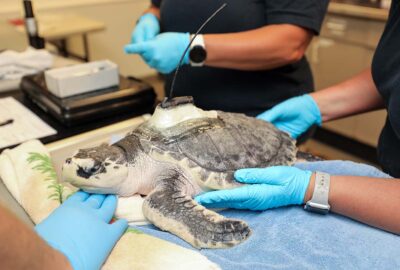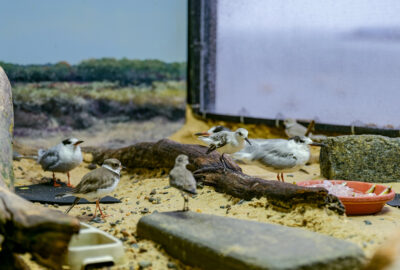Giving Threatened Freshwater Turtles a Head Start
Behind the scenes at the Aquarium, aquarists raise baby turtles through their first winter—helping boost wild populations one hatchling at a time.
By New England Aquarium on Friday, June 27, 2025

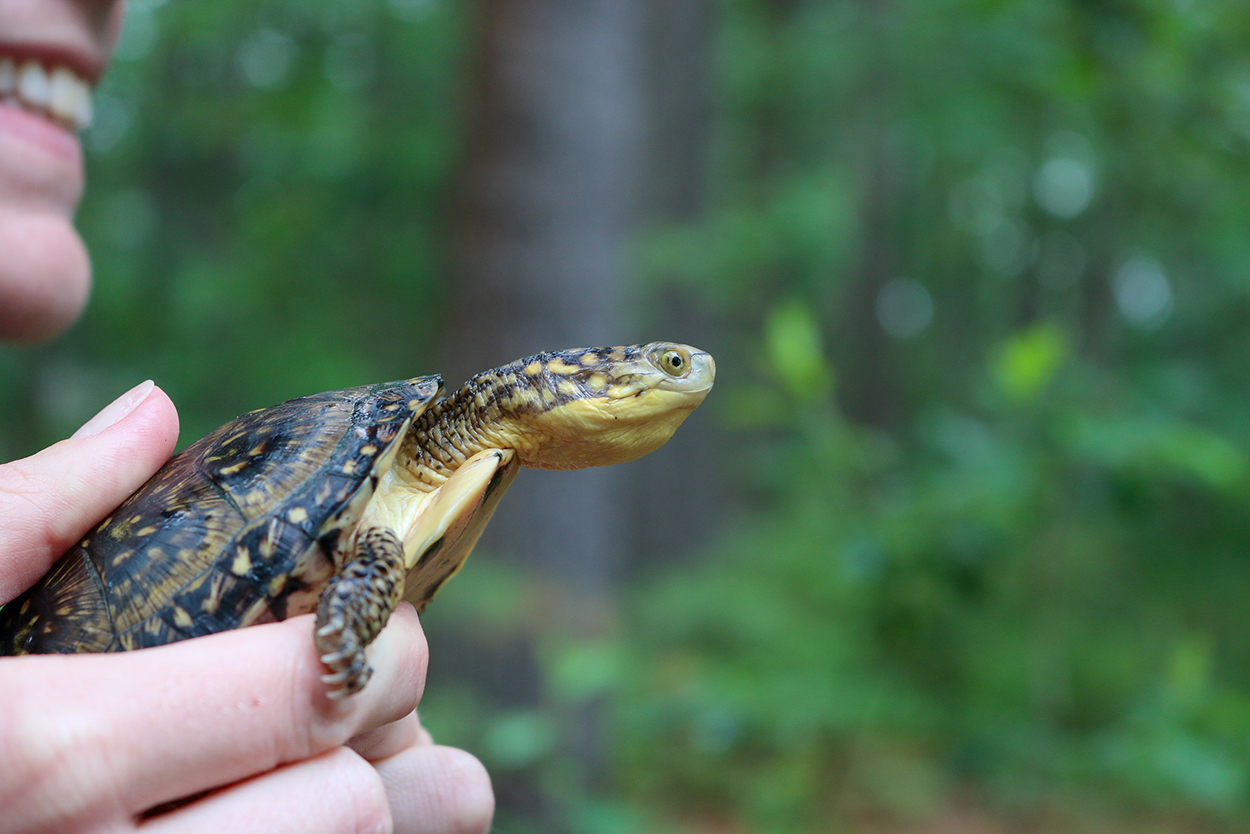
You may have seen sea turtles at the Aquarium, but did you know that behind the scenes, we also care for threatened local freshwater turtles? Through Zoo New England’s Hatchling and Turtle Conservation through Headstarting (HATCH) program, aquarists raise about five hatchlings (baby turtles) for nine months each fall and winter—a period when these youngsters would normally be hibernating in the wild—before releasing them back into their natural habitat.
“When we release them, they’re about the size of 3- to 4-year-old turtles rather than 9-month-olds,” said Tatiana Chinitz, aquarist II on the interactive exhibits team at the Aquarium. “It increases their chances of surviving to adulthood once they’re back in the wild.”

Raising big, strong turtles
The Aquarium has participated in HATCH Program since 2008, raising either wood turtles or Blanding’s turtles each year.
This year was a Blanding’s year!
Blanding’s turtles are a relatively large, gentle freshwater species—and one of the most threatened species in the northeastern United States, with possibly fewer than 3,000 individuals remaining in the region. These long-lived turtles can reach 80 years of age or more, but they’re slow to mature, often laying their first eggs at around age 20. This makes the population especially vulnerable to human-caused threats, as it takes decades for a single reproductive adult to be replaced.
Instead of hibernating through New England’s harsh winter, the Blanding’s turtles at the Aquarium spend nine months bulking up in comfort. They bask under UV heat lamps (which help strengthen their shells) and enjoy three nutritious meals a day of pellets and a specialized aquatic turtle gel containing plant matter.
The team also offers produce, but the Blanding’s turtles aren’t exactly salad fans. “I’ll put a piece of lettuce in there for the entire day, and at the end of the day with the Blanding’s, there will be four bites out of it, maybe,” Tatiana said. “And then I’ll see the little pieces floating…They interact with it, but won’t eat it.”
A couple of months before release, aquarists introduce live foods like crickets and worms, helping the turtles practice hunting, an essential skill they’ll need in the wild.
Our team takes meticulous care of the turtles’ temporary habitat, cleaning the tank three to four times a day and refreshing the water twice daily to maintain high water quality. They also add hiding places to encourage natural behaviors and track each turtle’s weight and length monthly to make sure they are growing on track for release in spring.
All that care pays off: This year’s turtles grew from about 10 grams to between 165.8 and 260.4 grams with our team’s help—a more than 1,000% increase in weight!
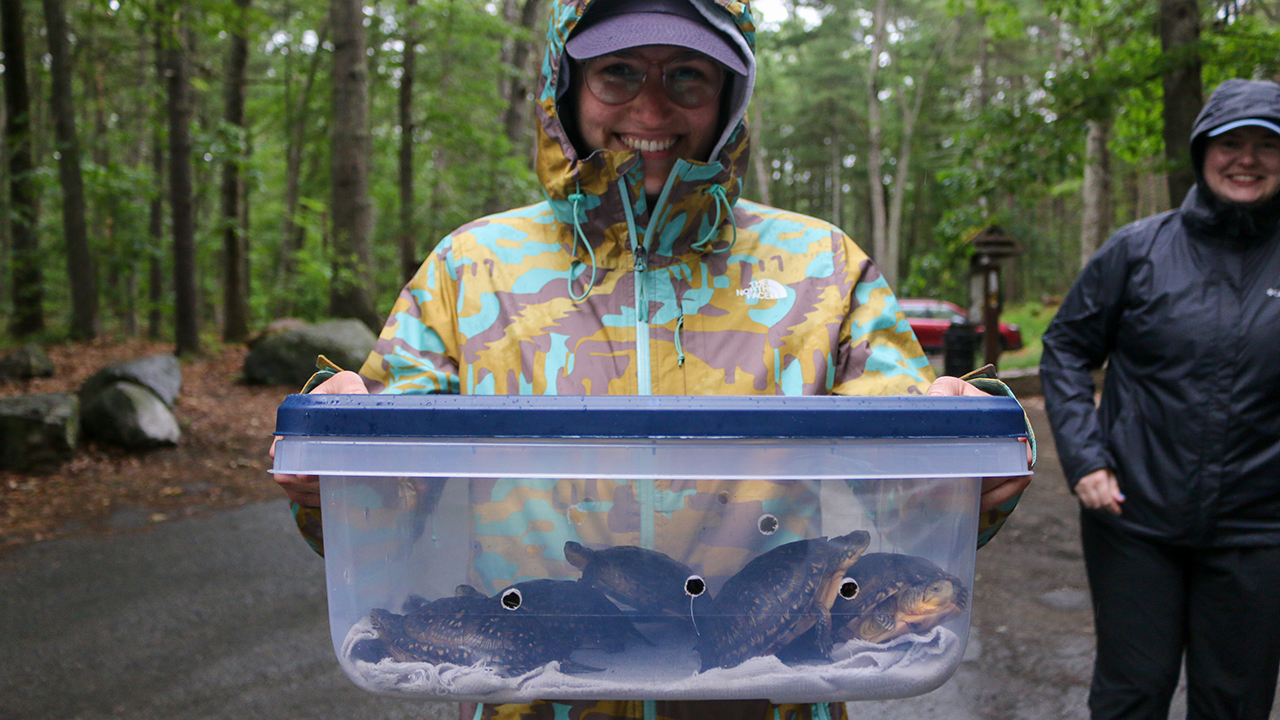
Release day 2025
On June 17, our team joined Zoo New England to release the turtles in Lowell-Dracut-Tyngsboro State Forest, along a river surrounded by wetlands, the same area where the hatchlings were originally collected.
Before release, scientists outfitted some of the turtles with tracking tags so Zoo New England can find their future nesting locations. They also ensured the turtles were clearly marked using a universal notching system, which assigns an ID number based on small notches in the edge of the turtle’s carapace—each notch representing thousands, hundreds, and tens depending on where it’s placed.
Then, it was time to wish the turtles well and send them on their way.
“They went running right off. Their instincts are strong,” Tatiana said. “I feel really proud when they go off really well.”
Making a difference in the wild
Thanks to HATCH and broader efforts to protect turtle nests across Massachusetts, Zoo New England estimates that Blanding’s turtle hatchlings at Great Meadows Wildlife Refuge in Concord, MA—home to one of New England’s largest Blanding’s turtle populations—have about 30 times better odds of surviving to adulthood.
Over the past 20 years of conservation efforts, including HATCH, the Blanding’s turtle population at Great Meadows has increased an estimated four- to six-fold!
In 2025, the Zoo New England team spotted one of the Aquarium’s first “head start” turtles, born in 2009 and released in 2010, now thriving in the wild and weighing about 995 grams. She might even be the first Aquarium-raised HATCH graduate to lay eggs in the upcoming nesting season.
“The whole mission at the Aquarium is conservation,” Tatiana said. “I really like the direct connection to conservation action that HATCH has… And just getting to see [the turtles] grow up and do so well at the end of the program is just always really exciting.”
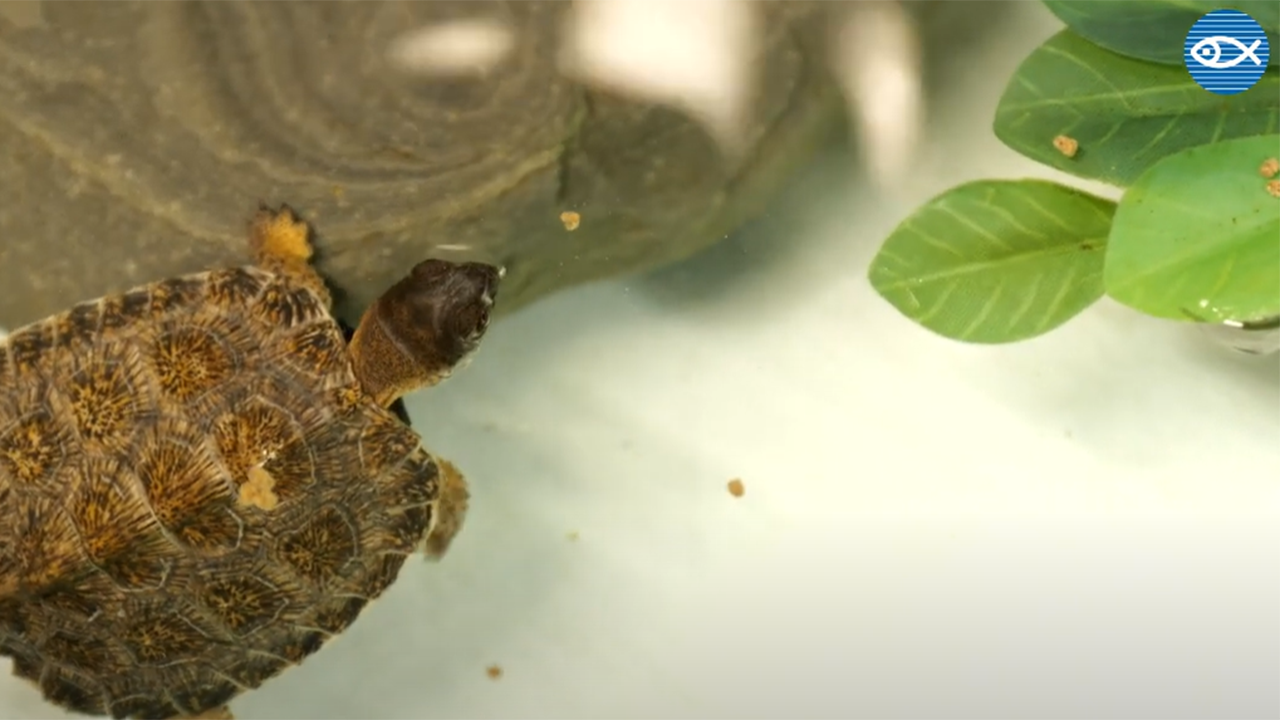
Learn more about the HATCH Turtle program
Every year, as part of our "headstart" program in partnership with Zoo New England turtle hatchlings are brought to the Aquarium to be cared for in the winter. Here, they are kept out of their usual winter hibernation in order to be fed + grow! This way, they are strong + healthy for a summer release back in the wild.

